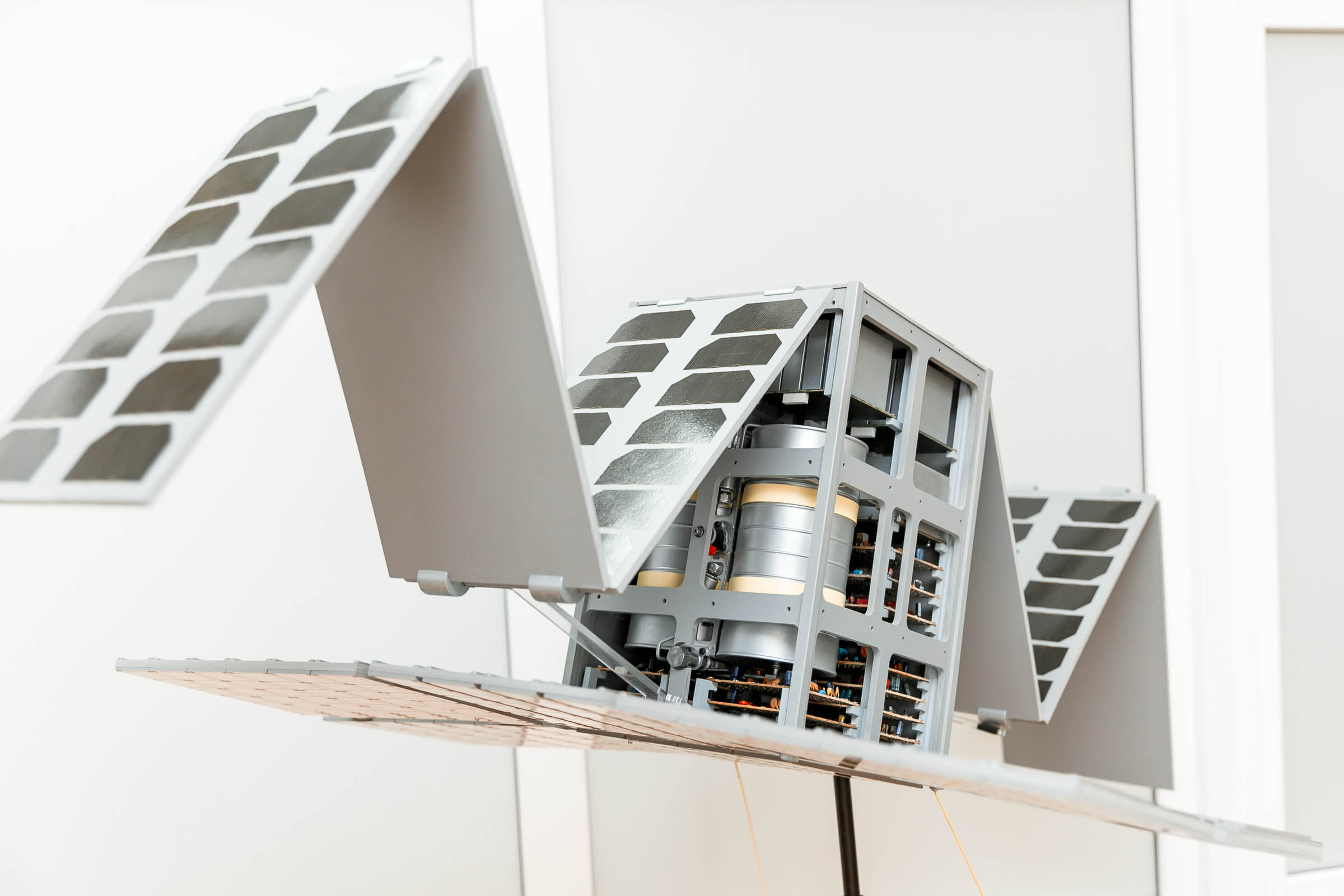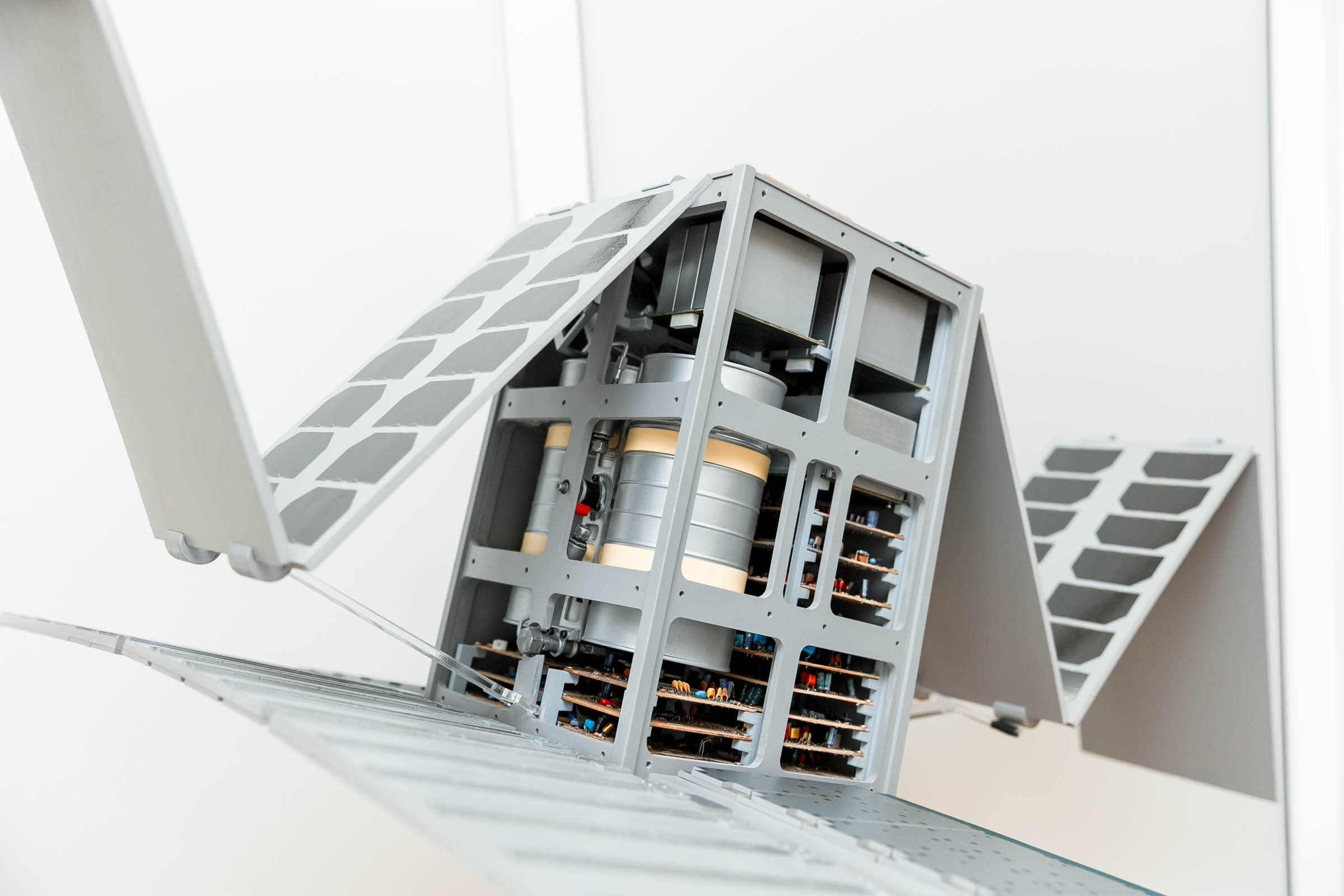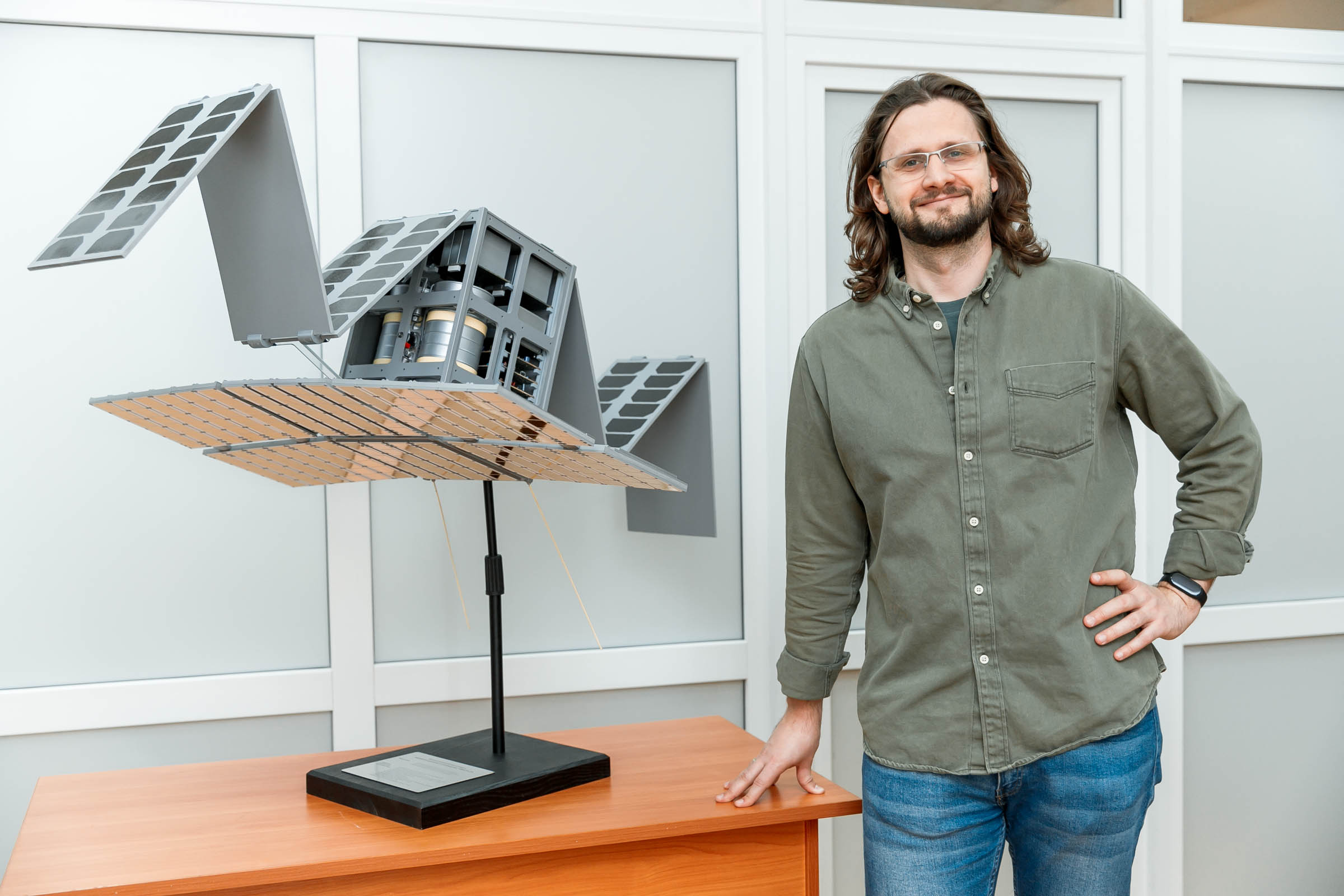The engineering model of the satellite is a full-size prototype of the future spacecraft, in terms of design it is as close as possible to the flight model that will go into orbit. The difference between the engineering model and the real spacecraft is that the work load and various units on board the engineering model are partially represented by mockups, rather than actual samples. An engineering model is usually designed to confirm the specified design characteristics during testing.
"The engineering model of the AIST-ST satellite is ready, and tests of its individual systems have begun. In terms of design and dimensions, this model is completely identical to the future spacecraft, for example, the frame and body of the model are similar to those that will fly into space later. Most of the internal systems and components are also real, operational, but part of the work load and a number of on-board devices are presented only in the form of mass-dimensional layouts – for example, a radar, a solar panel and a star sensor responsible for determining the orientation of the satellite," said Maxim Ivanushkin, head of the Cyberphysical Factory of Small Spacecraft of Samara University.
"It is still difficult to say how long the tests of the engineering model will last, they can take quite a long period of time. Simultaneously with the start of testing of the engineering model, together with specialists from the STC company and scientists from Samara University, the assembly of the flight sample of the satellite begins, the launch of which is scheduled for the second half of this year," Maxim Ivanushkin noted.
The University has already successfully developed a system for opening solar panels of a spacecraft. Earlier, the satellite's propulsion system, developed by the Special Technology Center company, was tested. The installation runs on Freon gas and is designed to change the orbital parameters of the satellite. The tests were conducted at the Moscow Aviation Institute.
About Satellite
The AIST-ST satellite is designed in the 12U cubesat format (12 units, that is, 12 interconnected "cubes", each measuring 10x10x10 cm). The scientists of the Samara University have developed the space platform of the satellite and a set of scientific gear; STC makes radar surveillance equipment and a propulsion plant.
The satellite's radar will operate in the X-band, this is the range from 8 to 12 GHz (wavelength from 3.75 to 2.5 cm). Thanks to the radar equipment, it will be possible to monitor the earth's surface regardless of the time of day and the level of illumination, in all weather conditions, through any dense clouds and clouds. Conventional satellite optics cannot handle such tasks.
With the help of radar sensing, it is possible to obtain accurate data on the relief of the earth's surface, find hidden objects in forests, effectively monitor the melting of glaciers in the mountains, identify contaminated areas of the water surface and determine the thickness of ice from space for ice exploration and laying icebreaker routes in the Arctic and Antarctic.
It is expected that the active life of the AIST-ST satellite will be at least 1 year, the estimated height of the working orbit – from 450 to 500 km. The maximal inclined surveillance height is 500 km, the capture range is 70 km. From the design altitude, a radio locator by STC with a synthesized aperture can provide a resolution capability of about 10 meters in the route mode and at least 2 meters in the detailed mode.
Works on creation of an AIST-ST satellite are being implemented as part of the "Priority 2030" federal strategic academic leadership program. It is planned that in the future the satellite design will be adapted for robotic assembly at the pilot production of the Cyberphysical Factory of Small Spacecraft of Samara University as part of the federal project "Advanced Engineering Schools".
Photo: Olesya Orina
 RU
RU  EN
EN  CN
CN  ES
ES 


